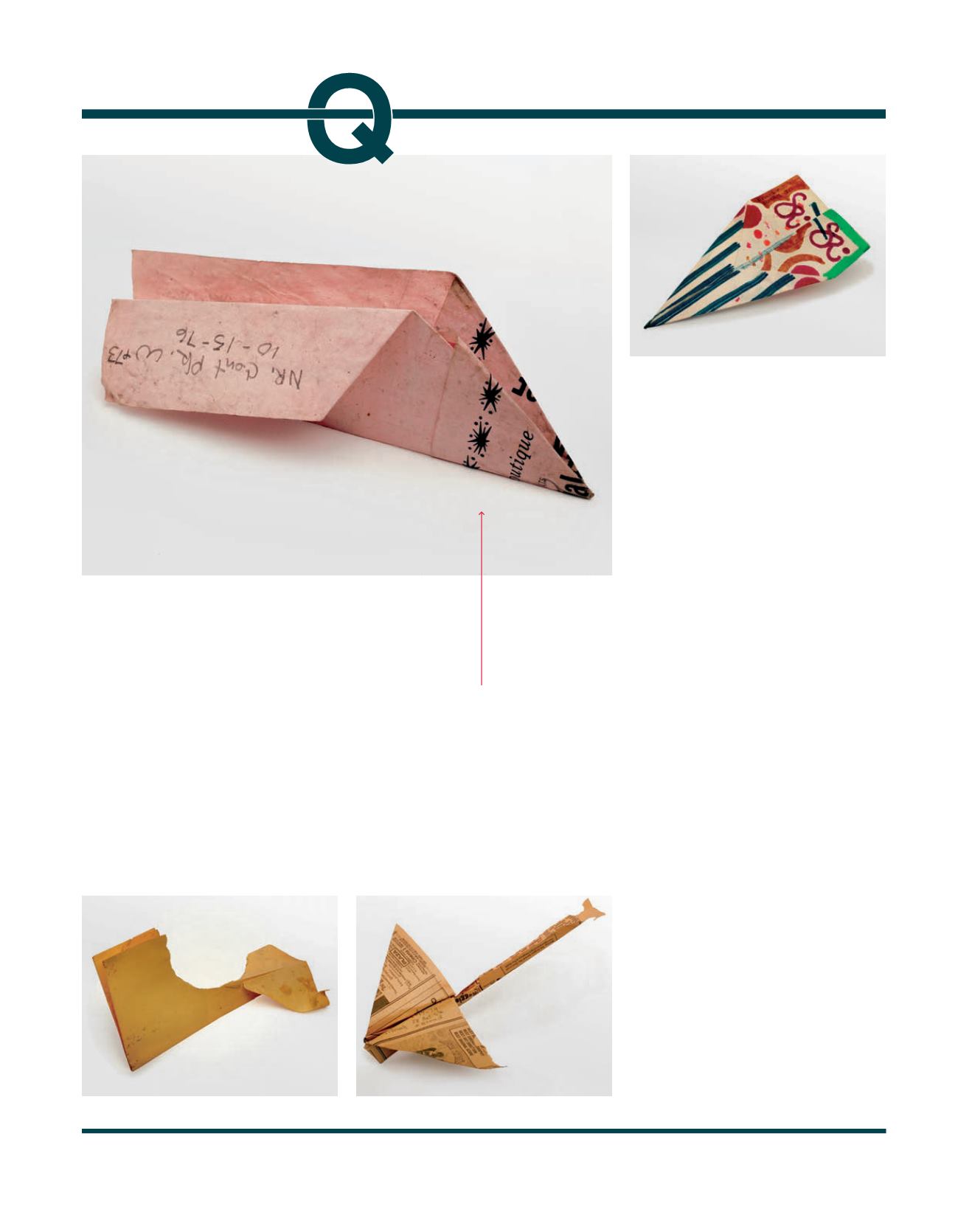
They’repartof thecollectionsofBeat
artistHarrySmith,whospentmore than
twodecadespickinguppaperplanes
from thestreetsofNewYork
What’swithall
thepaperplanes?
A
s a childonAmerica’s
PacificNorthwest Coast in
the 1920s and ’30s,
counterculture artist Harry
Everett Smith, had several
rather strangehobbies. Hismother
workedonNativeAmerican reservations,
andhere Smithdeveloped an interest in
anthropology, NativeAmericandialects,
alchemy and theoccult.
As an adult, hecultivatedhis interest in
theobscure, andwhilehewas best known
as an avant-gardefilm-maker and artist,
hewas also an avidcollector. Hewas
part of theBeat cultureof SanFrancisco,
and thenmoved toNew York, wherehe
lived in– andwas kickedout of – various
Bohemian and vagrant hotels, where the
likes of RobertMapplethorpe andPatti
Smithwereneighbours.
As a collector, hecollected records
before itwas hip (and fromhis epic
collectioncreated the
Anthologyof
AmericanFolkMusic
, which is said to
have initiated the folkmusic revival
and influenced artists likeBobDylan),
alongsidemyriadbizarre and seemingly
unrelatedobjects – includingprimitive
string figures, UkrainianEaster eggs,
beggars’ signs, and tarot cards. And from
around 1961 to 1983, hepickeduppaper
airplanes from the streets of New York.
“There’s nobody quite likeHarry
Smith,” says Andrew Lampert, curator
atNew York’s Anthology FilmArchives
and, togetherwithhis colleague John
Klacsmann, theco-editor of
Paper
Airplanes
, anewbookdocumenting
Smith’s 251 survivingpaper airplanes.
»
Words
⁄
Mandi Keighran
15 October 1976, Central Park West & West 73rd St
29 October 1980, Broadway & East 23rd St
No annotation
17 March 1979, West 28th St,
between 5th Ave & Broadway
n
A
n
/027


